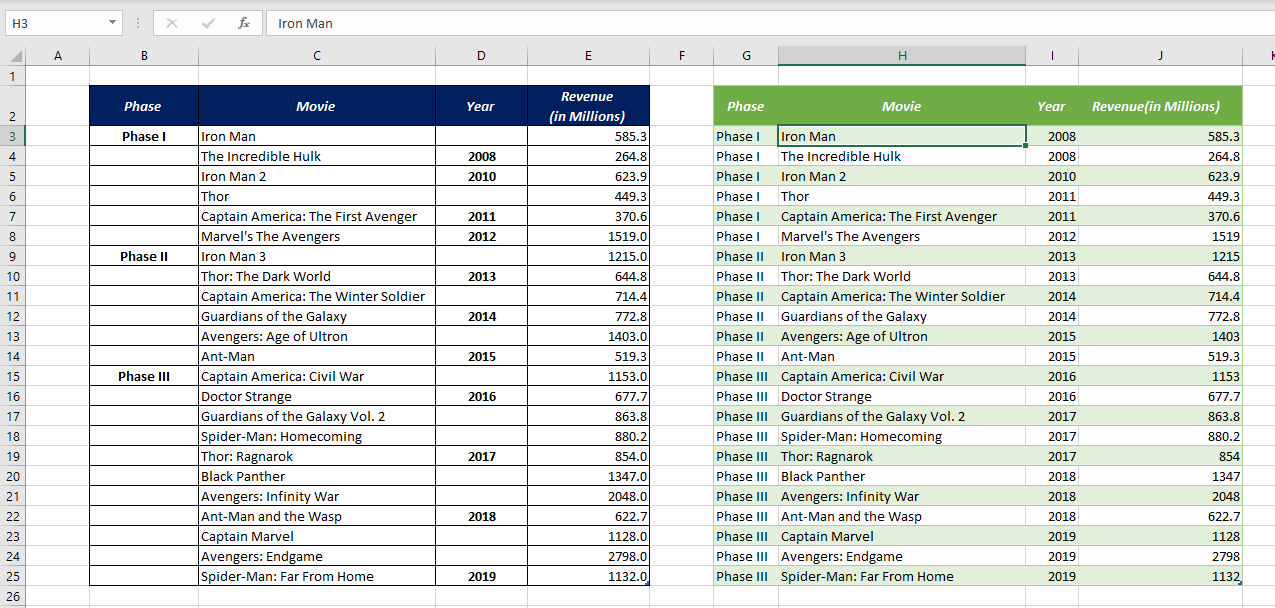
I wanted to add some useful information to this discussion Henrik, thank you for posting this very useful information. In order to achieve this, click on “Close & Load” in the top-left corner.
Last step: Insert the data into a worksheet. Please refer to this article for a list of local number formats.  Change the decimal and thousand separators: Right-click again on a column with decimal numbers.
Change the decimal and thousand separators: Right-click again on a column with decimal numbers. 
Recommendation: Select several date columns at the same time by pressing and holding the Ctrl key while selecting the columns. Repeat the steps 5 to 10 for each date column. In this example, the German date format is used. Alternatively click on the small “ABC” symbol in the top left corner of the column heading.
Change the date format: Right-click on a column that contains a date.  If you data is not represented correctly, delete the automatically created step “Changed Type”. switching thousands- and decimal separators) click on “Edit”. If you want to separate your import data with the “Fixed Width” option, you have to type the numbers of characters, after which you want to data to be divided. Here you can also switch to “Fixed Width”. Click on “From Text/CSV” on the “Data” ribbon in order to start the import process. Please refer to the numbers on the screenshots: Importing text files in Excel with the “Get & Transform” tools requires many steps. Finalize the import by clicking on “Finish”. …for defining decimals and thousands separators. For dates, you could define the order of days, months and years.
If you data is not represented correctly, delete the automatically created step “Changed Type”. switching thousands- and decimal separators) click on “Edit”. If you want to separate your import data with the “Fixed Width” option, you have to type the numbers of characters, after which you want to data to be divided. Here you can also switch to “Fixed Width”. Click on “From Text/CSV” on the “Data” ribbon in order to start the import process. Please refer to the numbers on the screenshots: Importing text files in Excel with the “Get & Transform” tools requires many steps. Finalize the import by clicking on “Finish”. …for defining decimals and thousands separators. For dates, you could define the order of days, months and years.  For each column, you can choose the data format. Usually text fields use quotation marks marking the beginning and end of a text field. This is the character dividing the data into columns, for example “Tab”, “Semicolon” or “Comma”. If the first row contains headers, check the corresponding box. Select how you want to define the columns: Either with a character as a separator or with a fixed width. Please refer to the paragraph above if this option is missing. If you have a recent Excel version and there is no button called “From Text” (but instead “From Text/CSV”), click on “Get Data”, then on “Legacy Wizards” and then on “From Text (Legacy)”. Go to the “Data” ribbon and click on “From Text”. The steps for using the “Text Import Wizard” in Excel are shown in the screenshots.
For each column, you can choose the data format. Usually text fields use quotation marks marking the beginning and end of a text field. This is the character dividing the data into columns, for example “Tab”, “Semicolon” or “Comma”. If the first row contains headers, check the corresponding box. Select how you want to define the columns: Either with a character as a separator or with a fixed width. Please refer to the paragraph above if this option is missing. If you have a recent Excel version and there is no button called “From Text” (but instead “From Text/CSV”), click on “Get Data”, then on “Legacy Wizards” and then on “From Text (Legacy)”. Go to the “Data” ribbon and click on “From Text”. The steps for using the “Text Import Wizard” in Excel are shown in the screenshots.








 0 kommentar(er)
0 kommentar(er)
